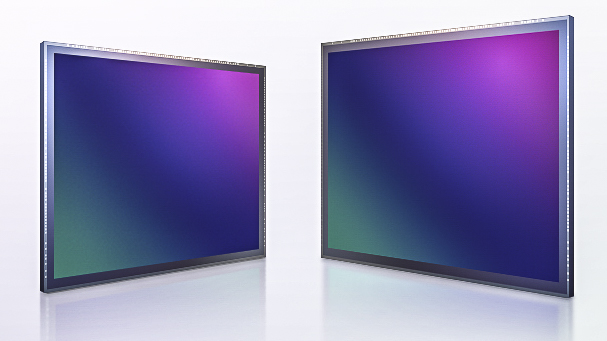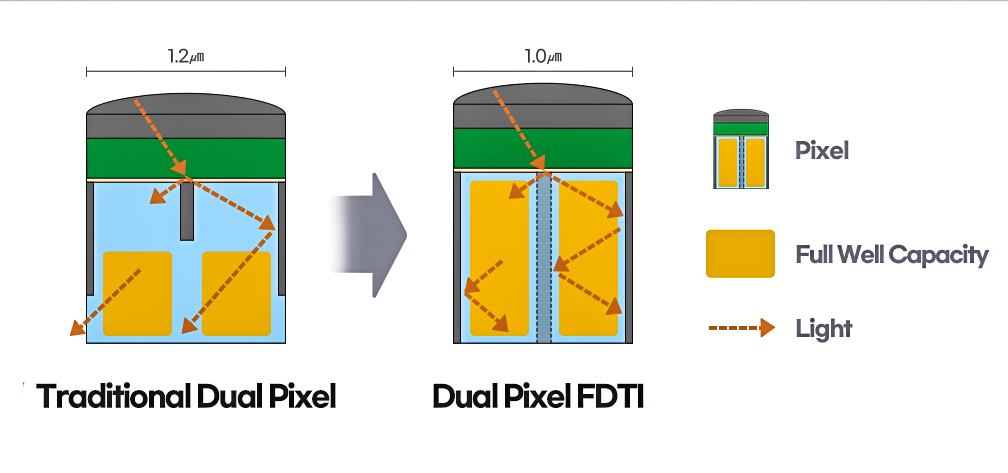Samsung unveils record-breaking 200 megapixel mobile phone sensor
The Samsung ISOCELL HP1 offers industry-first 200MP phone sensor with pixel binning trick that's perfect for shooting 8K

Samsung has officially announced that it is producing a mobile phone sensor with a whopping 200 megapixels - setting a new record for cellphone camera resolution. The Samsung Isocell HP1 uses photosites that measure just 0.64μm across - the same size as found in Samsung's own JN1 50MP chip that was introduced earlier this year.
The jump in pixel count is designed to use with Samsung's improved pixel binning technology - that clusters photosites together to increase image performance. The company says that its all-new ChameleonCell technology deploys a pixel-binning algorithm that uses a two-by-two, four-by-four or full pixel layout depending on the environment. Furthermore, in lowlight, the HP1 transforms into a 12.5MP image sensor with large 2.56μm pixels by merging 16 neighboring pixels.
The Isocell HP1 image sensor can shoot 8K videos at 30fps with minimum loss in the field of view, the company says, by merging four neighboring pixels to bring the resolution down to 50MP or 8,192 x 6,144 to take 8K (7,680 x 4,320) videos without the need to crop or scale down the full image resolution.

The new 200 megapixel sensor is already expected to be used in Xiaomi's next flagship mobile phone, according to recent rumors. There has also been speculation that Samsung may use this new sensor on the Samsung Galaxy S22 Ultra, that industry pundits expect to be announced later this year - but could well not actually be put into action by Samsung until 2022.
• See the Best Samsung phones in 2021

Also announced by Samsung Electronics semiconductor division is the Isocell GN5, which claims to be the industry’s first 1.0μm image sensor to integrate Dual Pixel Pro - which is designed to boost autofocus performance.
This technology places two photodiodes, within each 1.0μm photosite of the sensor either horizontally or vertically to recognize pattern changes in all directions. With one million phase-detecting multi-directional photodiodes covering all areas of the sensor, the sensor’s autofocusing is described as "instantaneous, enabling sharper images in either bright or low-lit environments".
Get the Digital Camera World Newsletter
The best camera deals, reviews, product advice, and unmissable photography news, direct to your inbox!
The image sensor applies Front Deep Trench Isolation (FDTI) on a Dual Pixel product for the first time in the industry. Despite the microscopic photodiode size, FDTI enables each photodiode to absorb and hold more light information, improving the photodiodes’ full-well capacity (FWC) and decreasing crosstalk within the pixel.
Read more
Best budget camera phone
Best iPhone for photography
Best camera for TikTok
Best TikTok lights
Best camera for Instagram
Best iPhone tripod
iPhone 13: Everything we know so far
Best camera phone
Chris George has worked on Digital Camera World since its launch in 2017. He has been writing about photography, mobile phones, video making and technology for over 30 years – and has edited numerous magazines including PhotoPlus, N-Photo, Digital Camera, Video Camera, and Professional Photography.
His first serious camera was the iconic Olympus OM10, with which he won the title of Young Photographer of the Year - long before the advent of autofocus and memory cards. Today he uses a Nikon D800, a Fujifilm X-T1, a Sony A7, and his iPhone 15 Pro Max.
He has written about technology for countless publications and websites including The Sunday Times Magazine, The Daily Telegraph, Dorling Kindersley, What Cellphone, T3 and Techradar.

